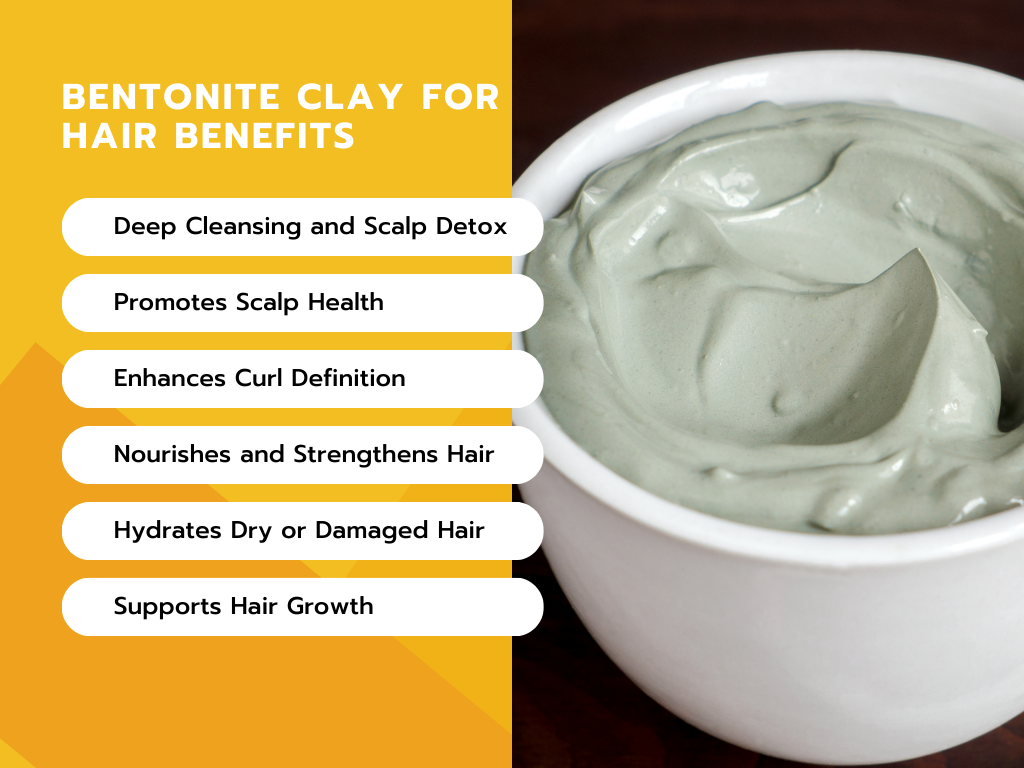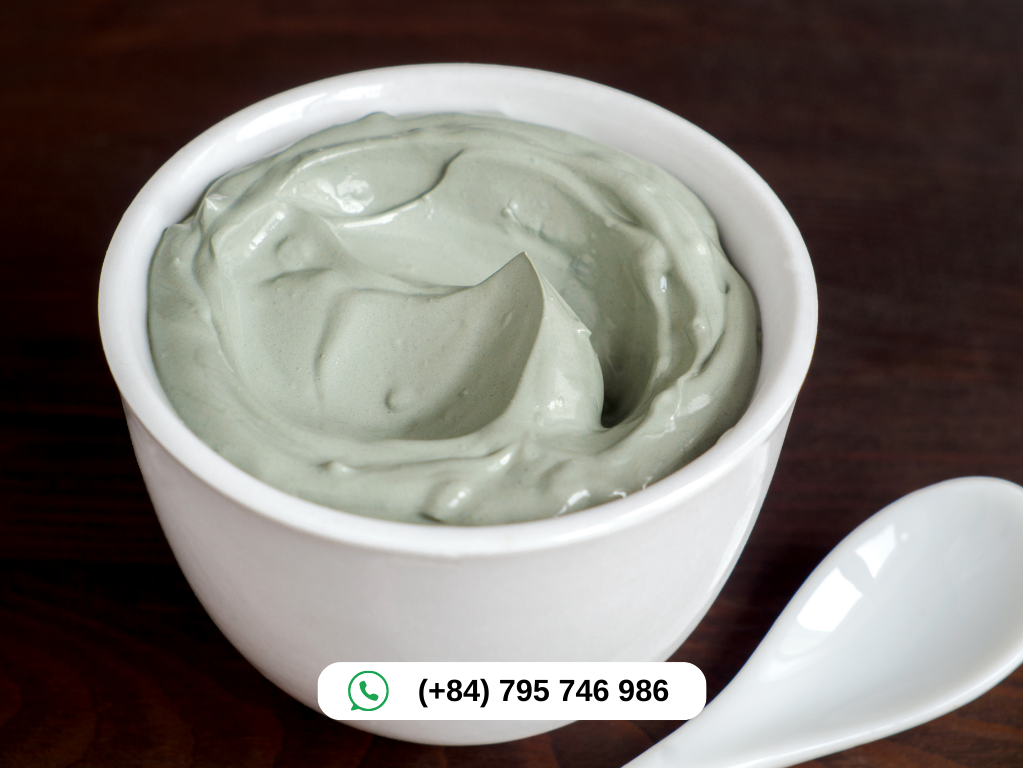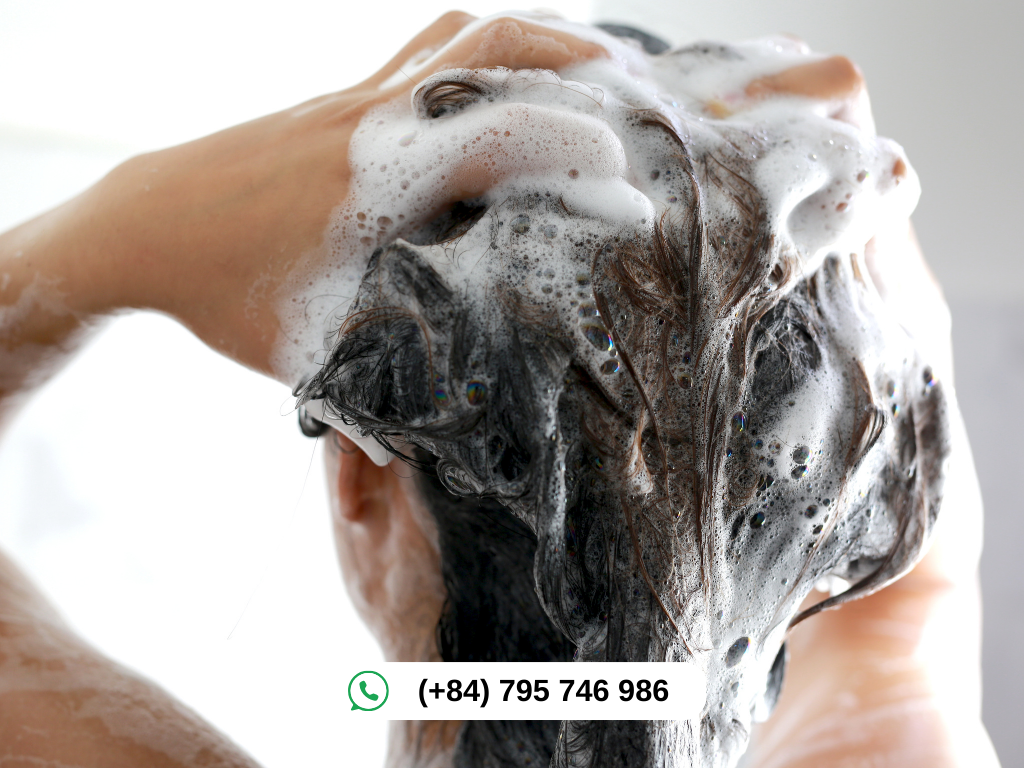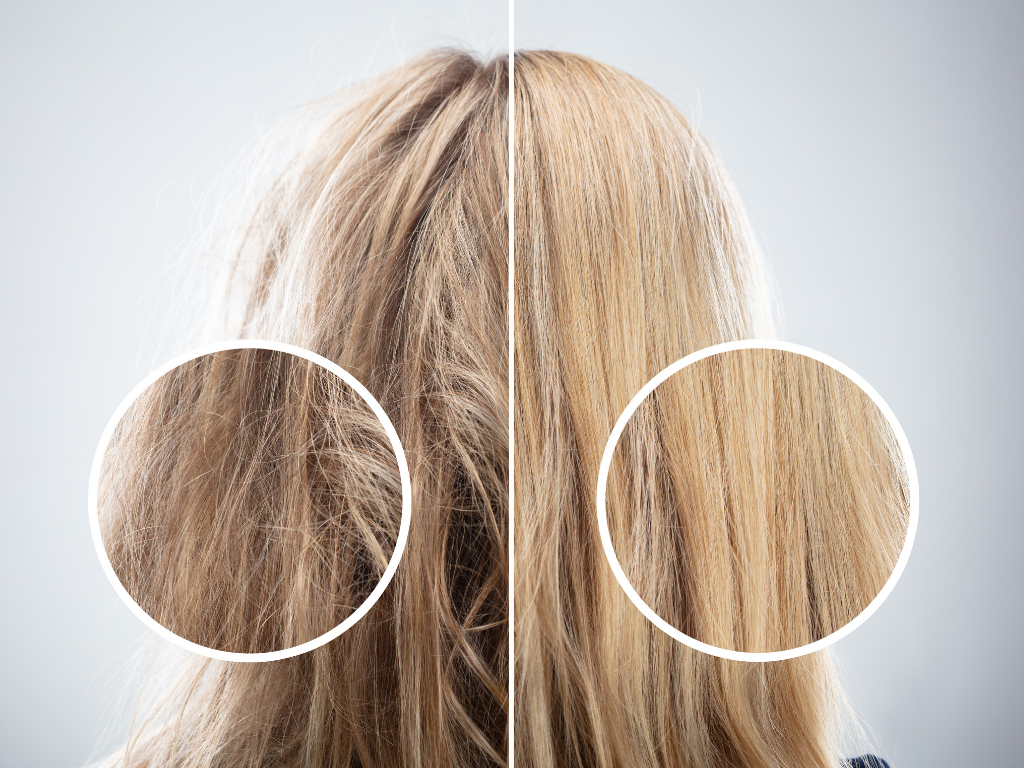Wondering what makes bentonite clay for hair a cult favorite in natural hair care? This mineral-rich clay, known for its detoxifying and clarifying properties, has become a go-to solution for cleansing the scalp, enhancing curl definition, and restoring moisture balance. Whether you have natural curls, coils, or transitioning strands, bentonite clay offers a gentle yet powerful way to remove buildup and revive dull hair. In this article, we answer the most common questions about using bentonite clay for hair and how to get the best results for your texture.
What Is Bentonite Clay?
Bentonite clay is a natural clay formed from weathered volcanic ash, primarily composed of montmorillonite, a mineral known for its absorbent and detoxifying properties. Found in regions like Fort Benton, Wyoming, it’s packed with essential minerals such as calcium, magnesium, potassium, and silica. These nutrients make bentonite clay for hair a powerful tool for cleansing and nourishing both the scalp and strands.
The clay’s unique negative ionic charge allows it to attract and bind to positively charged impurities, such as dirt, excess oils, and toxins. When mixed with water or apple cider vinegar, it forms a smooth paste that can be applied as a hair mask or wash, offering a gentle yet effective alternative to chemical-laden shampoos. Its versatility and natural composition have made bentonite clay for hair a favorite among those embracing the Curly Girl Method and other natural hair care practices.

What are The Main Benefits of Bentonite Clay for Hair?
Bentonite clay for hair offers a range of benefits, from deep cleansing to enhancing curl definition. Here’s a detailed look at how it can transform your hair care routine:
- Deep Cleansing and Scalp Detox: Bentonite clay acts like a magnet, drawing out product buildup, excess sebum, and environmental pollutants from the scalp and hair. Its clarifying action cleanses without stripping natural oils, leaving your scalp refreshed and balanced. This makes it ideal for those transitioning to natural hair care or dealing with heavy styling product residue.
- Promotes Scalp Health: The anti-inflammatory and antibacterial properties of bentonite clay for hair help soothe scalp irritation, reduce itchiness, and combat flaking caused by conditions like dandruff or seborrheic dermatitis. A clean, healthy scalp creates an optimal environment for hair follicles to thrive.
- Enhances Curl Definition: For curly, coily, or kinky hair types, bentonite clay for hair is a game-changer. It smooths the hair cuticle, reducing frizz and enhancing natural curl patterns. The result is shinier, more defined curls that feel soft and manageable, making it a popular choice for those with Type 3 or Type 4 hair.
- Nourishes and Strengthens Hair: Rich in minerals like silica and magnesium, bentonite clay for hair delivers nutrients that strengthen hair strands and support overall hair health. By unclogging follicles, it ensures nutrients reach the roots, potentially reducing breakage and improving hair resilience.
- Hydrates Dry or Damaged Hair: Despite its cleansing power, bentonite clay can hydrate hair when used correctly. Its ability to absorb and retain water helps moisturize dry or damaged strands, leaving them softer and less prone to brittleness. When paired with hydrating ingredients like aloe vera or natural oils, it becomes a conditioning treatment.
- Bentonite Clay for Hair Growth: While not a direct growth stimulant, bentonite clay for hair growth fosters a healthy scalp environment by removing blockages from follicles and improving circulation. A nourished scalp and strong hair strands create the foundation for longer, healthier hair over time.

How to Use Bentonite Clay for Hair Right Way
Step 1: Gather Your Ingredients and Tools
To create a bentonite clay hair mask, you’ll need:
- ½ to 1 cup of bentonite clay (adjust based on hair length and thickness).
- 6–12 tablespoons of water or apple cider vinegar (ACV) for mixing.
- Optional: 1–2 tablespoons of natural oils (e.g., coconut, olive, or jojoba) or aloe vera gel for added moisture.
- Non-metal bowl and spoon (metal can reduce the clay’s effectiveness).
- Plastic shower cap or towel for covering hair.
- Spray bottle with water (optional, to keep hair damp).

Step 2: Mix the Bentonite Clay Hair Mask
In a non-metal bowl, combine bentonite clay with water or apple cider vinegar (ACV) to create a smooth paste for your bentonite clay for hair treatment. Stir the mixture with a non-metal spoon until it reaches a yogurt-like consistency, ensuring it’s free of lumps. If desired, add a small amount of natural oil, such as coconut or jojoba, or aloe vera gel to boost hydration and make the mask easier to apply. Adjust the texture by adding more liquid if the paste is too thick or more clay if it’s too runny. Prepare only enough for one use, as bentonite clay for hair masks are most effective when freshly mixed.

Step 3: Prepare Your Hair
Before applying the bentonite clay for hair mask, ensure your hair is clean, detangled, and slightly damp to allow for even distribution. Divide your hair into four to six sections to make application manageable, particularly if you have thick or curly hair. If your hair begins to dry during the process, lightly mist it with water from a spray bottle to maintain moisture and ease application.
Step 4: Apply the Bentonite Clay Mask
Using your fingers or a brush, spread the bentonite clay for hair mask onto each section, starting at the scalp and working through to the ends. Gently massage the clay into your scalp to stimulate circulation and ensure it reaches the roots, promoting a thorough cleanse. Distribute the mask evenly along the strands to enhance curl definition and smoothness. Once applied, cover your hair with a plastic shower cap or wrap it in a towel to keep the mask moist and prevent it from hardening. Work efficiently to complete the application within five to ten minutes, as the clay may start to set in the bowl.

Step 5: Let It Sit
Allow the bentonite clay for hair mask to remain on your hair for 15 to 20 minutes. Monitor the mask to ensure it doesn’t dry completely, as hardened clay can strip moisture and lead to breakage. If you notice the mask beginning to dry, lightly mist your hair with water to keep it pliable. This short duration is sufficient for the clay to detoxify your scalp and nourish your strands effectively.
Step 6: Rinse Thoroughly
Rinse the bentonite clay for hair mask out with warm water in the shower, gently massaging your scalp to loosen the clay. Take care to remove all traces of the mask, as leftover residue can leave hair feeling gritty or cause scalp irritation. For thorough cleansing, follow with a sulfate-free shampoo to ensure no clay remains. Finish with a deep conditioner or leave-in conditioner to restore moisture and softness, counteracting any potential drying effects of the clay.

Step 7: Style as Usual
After rinsing and conditioning, proceed to style your hair as you normally would. You may notice immediate benefits from using bentonite clay for hair, such as enhanced curl definition, reduced frizz, and a cleaner, refreshed scalp. Enjoy the revitalized look and feel of your hair, ready for your favorite styling routine.
Did Bentonite Clay Ruin My Hair?
Bentonite clay for hair is unlikely to cause permanent damage, but certain errors can result in temporary issues. Here are the main ways things can go wrong and how they affect your hair:
- Over-Drying: Bentonite clay absorbs moisture, and leaving it on too long or letting it dry completely can strip hair of natural oils, leading to dryness or brittleness. This is especially true for low-porosity or already dry hair.
- Residue Buildup: Incomplete rinsing can leave clay particles in the hair, causing a gritty texture, tangling, or scalp irritation.
- Scalp Sensitivity: Some individuals may experience irritation or allergic reactions, particularly if they have sensitive skin or skip a patch test.
- Improper Mixing: Using metal utensils or containers can neutralize the clay’s negative charge, reducing its effectiveness and potentially causing uneven application.
These issues don’t mean bentonite clay ruined my hair—they stem from incorrect usage. With the right approach, you can avoid these pitfalls and enjoy its benefits.

Tips and Tricks for Best Results with Bentonite Clay for Hair
Using bentonite clay for hair can transform your hair care routine by cleansing, nourishing, and defining your natural texture. To maximize its benefits and avoid potential pitfalls, follow these practical tips to ensure the best results for your hair and scalp.
- Choose High-Quality Bentonite Clay: Opt for pure, food-grade bentonite clay to ensure it’s free from additives or contaminants. Check for a fine, powdery texture, which mixes smoothly and is gentle on hair. This ensures bentonite clay for hair delivers optimal cleansing and mineral benefits.
- Use Non-Metal Tools: Mix bentonite clay for hair with a wooden or plastic spoon in a non-metal bowl. Metal can interact with the clay’s negative ionic charge, reducing its effectiveness for detoxifying the scalp and hair.
- Customize the Mixture for Your Hair Type: Adjust the ratio of clay to liquid (water or apple cider vinegar) based on your hair’s needs. For dry or curly hair, add moisturizing ingredients like coconut oil or aloe vera. For oily hair, use apple cider vinegar to enhance the cleansing power of bentonite clay for hair.
- Section Hair for Even Application: Divide your hair into 4–6 sections, especially if you have thick or curly hair. This ensures the bentonite clay for hair reaches all strands and the scalp, maximizing its detoxifying and curl-defining benefits.
- Don’t Let the Clay Dry Completely: Leave the bentonite clay for hair mask on for 15–20 minutes, but avoid letting it harden fully, as this can dry out your hair. Use a spray bottle to keep the mask moist during application, especially for longer treatments.
- Rinse Thoroughly with Warm Water: Remove the bentonite clay for hair completely to prevent residue, which can make hair feel gritty. Rinse with warm water for several minutes, massaging the scalp to ensure all clay is washed out.
- Limit Frequency to 1–2 Times Monthly: Overusing bentonite clay for hair can strip natural oils, especially for low-porosity or dry hair. Stick to once or twice a month to maintain a healthy balance of cleansing and hydration.

Conclusion
Bentonite clay for hair is a versatile, natural solution that offers deep cleansing, curl enhancement, and scalp health benefits. With this guide of Govihair, you can understand how to use it correctly, bentonite clay for hair benefits, avoid potential pitfalls and enjoy its transformative effects.
Ready to transform your hair care routine? At Govihair, we provide not only premium-quality Vietnamese hair extensions but also trusted tips and guides to help you get the best results, whether it’s with bentonite clay treatments or daily styling. Explore our wide range of textures, lengths, and colors to find your perfect match.
Upgrade your look today with Govihair, where beauty begins with real, healthy hair.
- WhatsApp: (+84) 795 746 986
- Email: [email protected]
- Instagram: govihair_vietnamhair_factory
- Tik Tok: govihairvietnam_official
- Website: govihair.com









 Ms. Victoria
Ms. Victoria